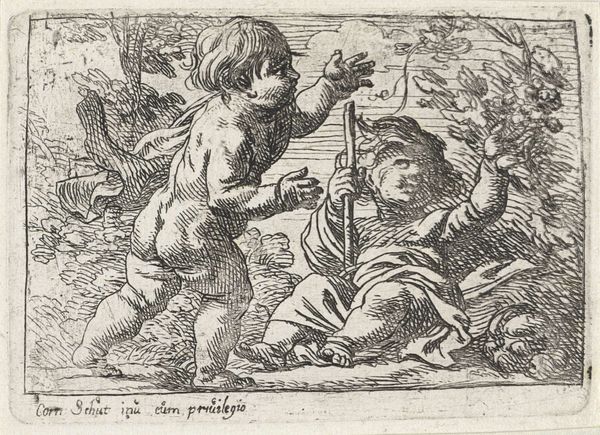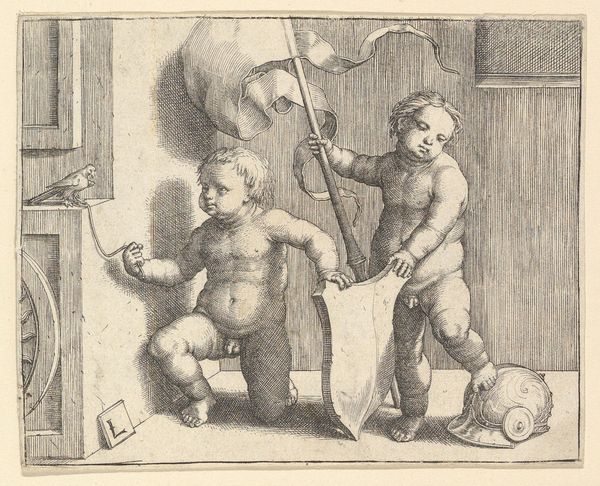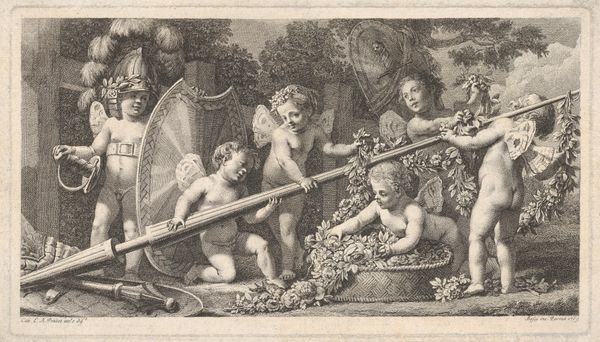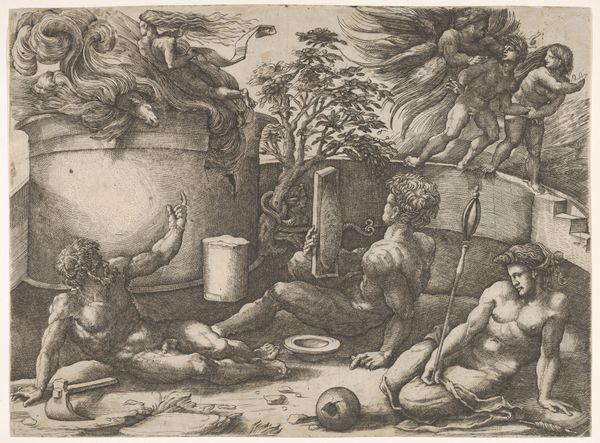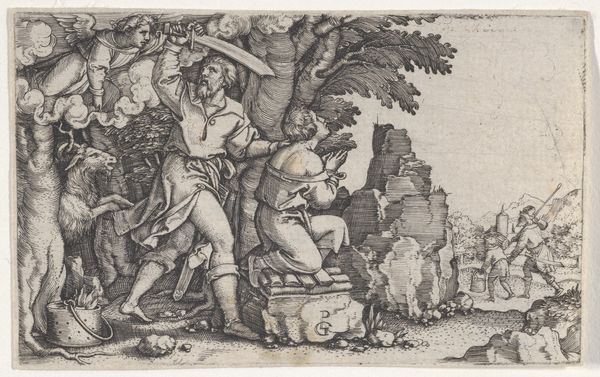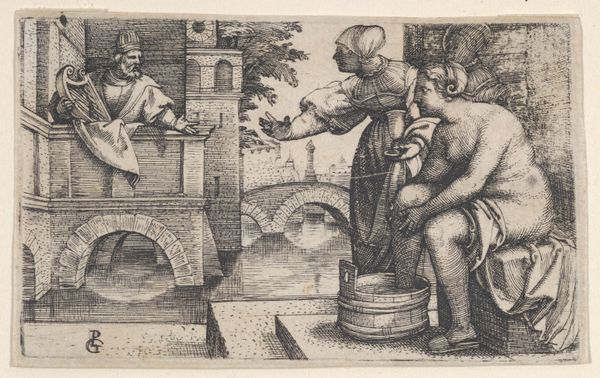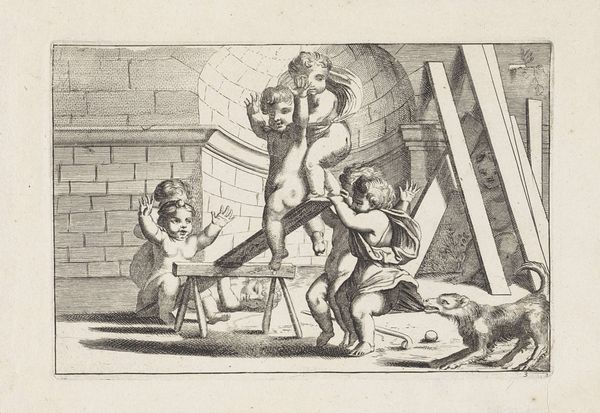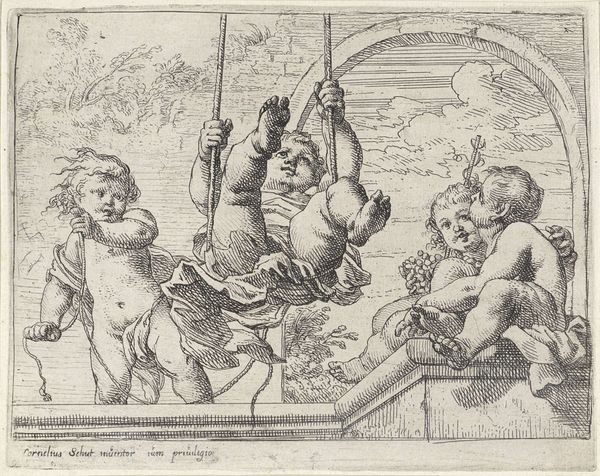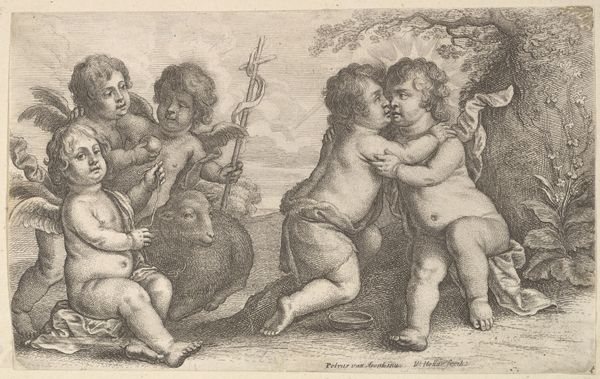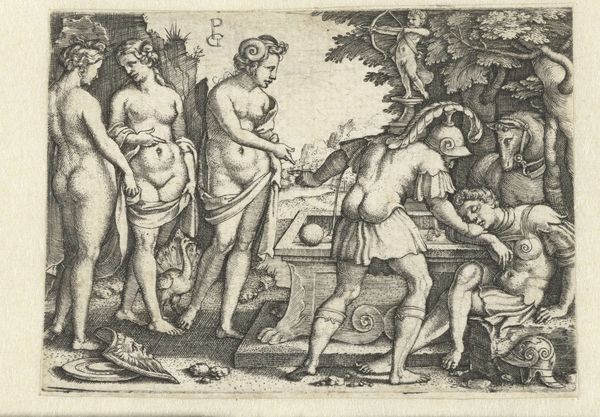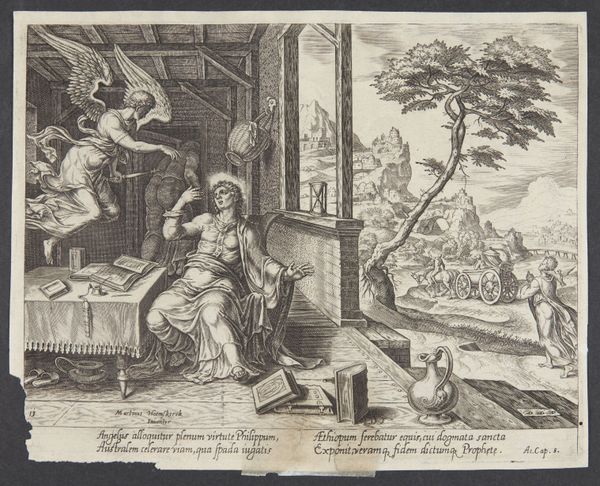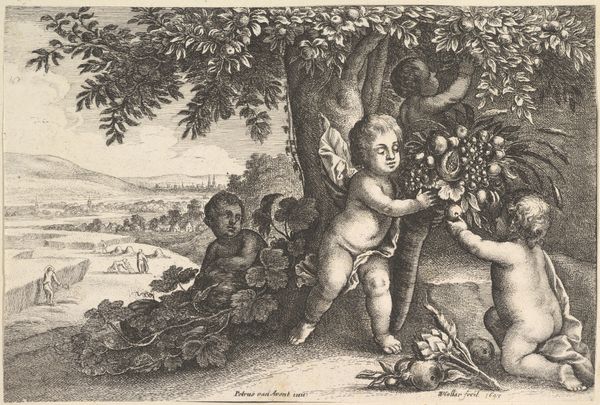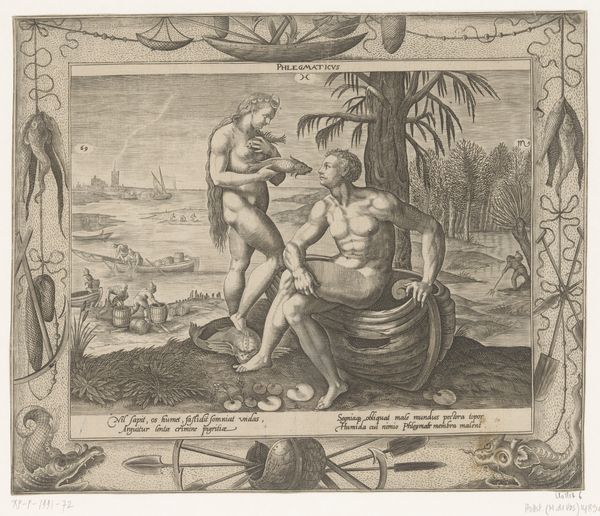
drawing, print, engraving
#
drawing
#
allegory
#
baroque
# print
#
figuration
#
engraving
Dimensions: Sheet: 5 3/8 × 7 15/16 in. (13.6 × 20.2 cm)
Copyright: Public Domain
Curator: Welcome. Today we’re exploring “Fire,” an engraving by Wenceslaus Hollar from 1647. It's currently held in the Metropolitan Museum of Art. Editor: Well, that’s a striking image. My initial thought is it has a disquieting effect, seeing those cherubic figures juxtaposed with such destructive implements. It's a curious mix of innocence and implied violence. Curator: Hollar has certainly achieved a compelling contrast. Note the meticulous rendering of the cannon itself. The cross-hatching technique creates a stunning sense of volume and metallic texture. It is technically remarkable, evidencing Hollar’s skill in capturing material essence through line. Editor: I agree. And consider the positioning of those figures. They seem to embody a kind of careless power. It speaks to broader historical anxieties during a time when warfare involved increasingly indiscriminate weaponry and shifting notions of justifiable force. Whose aims do these putti serve, really? What system are they sworn to protect with such an armamentarium? Curator: You’re interpreting those cherubs allegorically, suggesting they represent destructive forces, and I agree this feels plausible. There’s an overt visual tension between the soft innocence of their forms and the cold precision of the weaponry. Editor: Precisely! They point to the period’s transition. I also notice how the classical imagery intersects with new war technologies—the old world quite literally weaponizing itself and forcing Europe into modernization in the face of many losses. Hollar exposes this critical paradigm. Curator: What I particularly value in the composition is how Hollar uses contrasting textures to guide the eye, compelling an intimate appreciation for visual tension. It underscores Hollar's ability to achieve symbolic representation. Editor: In turn, I view those technical accomplishments as functioning symbolically. His skills served not only artful representation, but also cultural criticism. To engage with those deeper anxieties and ethical dilemmas Hollar surely wished his public to also examine and question during those challenging times. Curator: Thank you for shedding new light on that dialogue. Editor: Absolutely! It all begins with questioning.
Comments
No comments
Be the first to comment and join the conversation on the ultimate creative platform.
